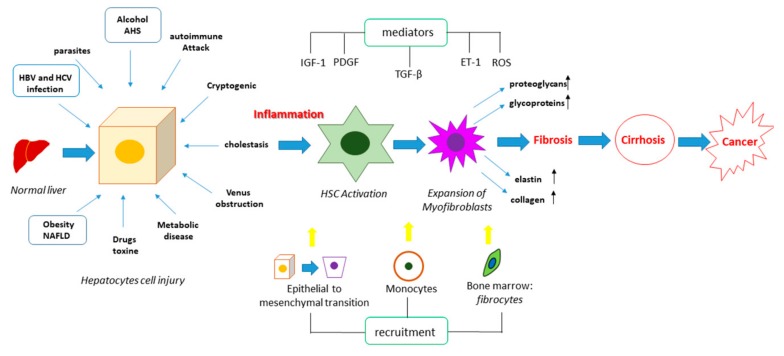Figure 2.
Pathogenesis of liver fibrosis. Liver fibrosis can be induced by different insults, which can trigger cell death processes in the hepatocytes, leading to the release of pro-fibrogenic mediators such as the transforming growth factor beta (TGF-β), the platelet-derived growth factor (PDGF), insulin-like growth factor-1 (IGF-1), endothelin 1 (ET-1), and reactive oxygen species (ROS). These can activate HSCs, promoting their differentiation into myofibroblasts, as well as they can stimulate the epithelial to mesenchymal transition and the recruitment of circulating monocytes and fibrocytes from bone marrow. The combination of these events leads to an increased expression and secretion of elastin, collagen, proteoglycans and glycoproteins, causing the accumulation of the ECM and therefore the fibrotic process. This represents a prerequisite for cirrhosis and cancer.

